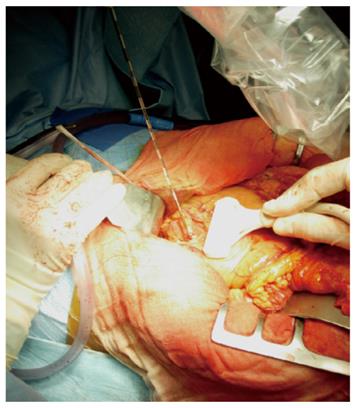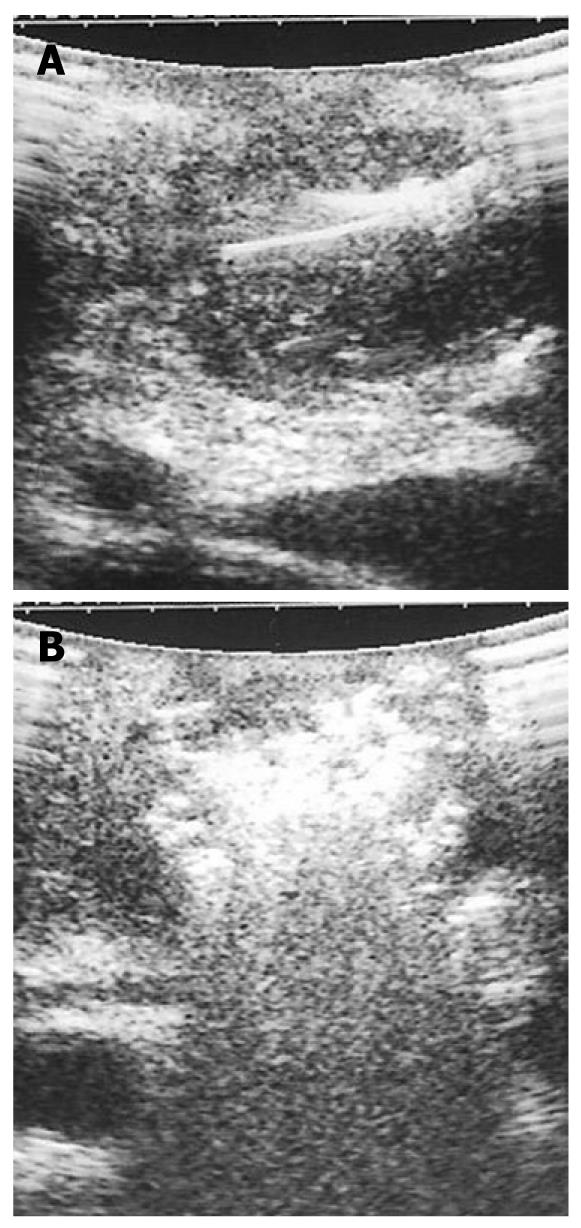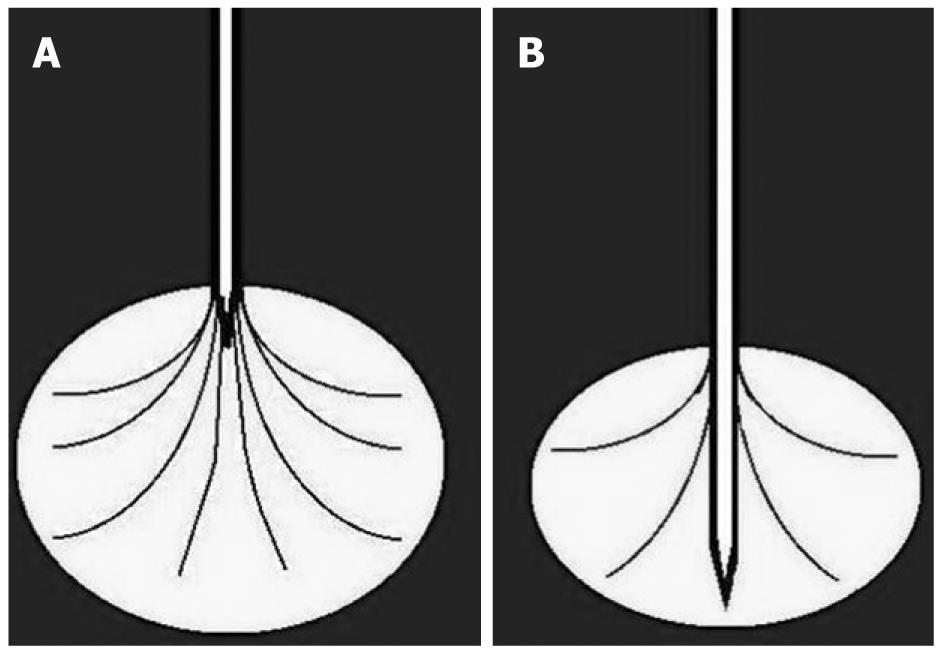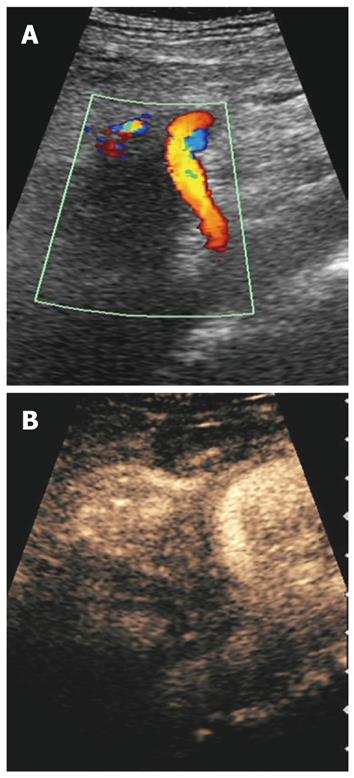Copyright
©2010 Baishideng.
World J Gastroenterol. Jul 28, 2010; 16(28): 3478-3483
Published online Jul 28, 2010. doi: 10.3748/wjg.v16.i28.3478
Published online Jul 28, 2010. doi: 10.3748/wjg.v16.i28.3478
Figure 1 Radiofrequency ablation procedure.
Ultrasound-guided radiofrequency ablation performed during laparotomy in open surgery.
Figure 2 Intraoperative ultrasound monitoring.
A: Needle with expandable electrodes is opened in the pancreatic hypoechoic mass under intraoperative ultrasound guidance; B: During radiofrequency ablation, the ablation zone becomes hyperechoic.
Figure 3 Needle with expandable electrodes.
The electrodes can be opened into the lesion from the top (A) or from the back (B) of the needle.
Figure 4 Needle with single electrode.
Single electrode of the needle in the lesion.
Figure 5 Pancreatic ductal adenocarcinoma after radiotherapy.
A: Longitudinal color Doppler scan of the lesion, with hypoechoic infiltration of the superior mesenteric artery; B: Longitudinal contrast-enhanced ultrasonography scan of the hypovascular lesion.
Figure 6 Pancreatic ductal adenocarcinoma before and after radiofrequency ablation.
A: Axial contrast-enhanced ultrasonography (US) scan of the hypovascular lesion; B: Axial contrast-enhanced US scan of the avascular lesion after radiofrequency ablation.
Figure 7 Pancreatic ductal adenocarcinoma before and after radiofrequency ablation.
A: Contrast-enhanced computed tomography (CT) of pancreatic head lesion that appears hypodense and vascularized at perfusion CT (right side); B: Contrast-enhanced CT of the lesion after radiofrequency ablation, which appears hypodense and avascular at perfusion CT (right side).
Figure 8 Ablation zone on target lesion.
A: Necrotic ablation zone (dotted grey) must covered the hepatocellular carcinoma (white); B: Necrotic ablation zone (dotted grey) must be included in the pancreatic ductal adenocarcinoma (grey).
- Citation: D’Onofrio M, Barbi E, Girelli R, Martone E, Gallotti A, Salvia R, Martini PT, Bassi C, Pederzoli P, Mucelli RP. Radiofrequency ablation of locally advanced pancreatic adenocarcinoma: An overview. World J Gastroenterol 2010; 16(28): 3478-3483
- URL: https://www.wjgnet.com/1007-9327/full/v16/i28/3478.htm
- DOI: https://dx.doi.org/10.3748/wjg.v16.i28.3478
















